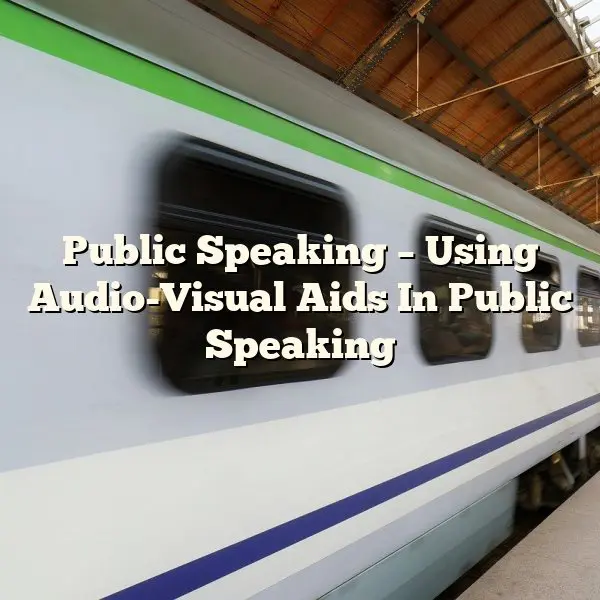One of the best ways to liven up even an already very good public speech is to add audio-visual aids. A short clip from another speech or a brief video (with or without sound) can often convey the message in essential form.
Sound and images can be used in many, many ways.
A short video can be used to introduce the topic that the speaker intends to discuss. He or she can then go on to analyze it in detail, flesh out the theme or expand on the subject of the clip. That gets your audience involved immediately. Provided, of course, that the clip itself is interesting and well done.
The video can, for example, be a short segment of a news broadcast showing how tin makes its way from the mine to a grocery store shelf. It can portray the construction of an airplane at 100 times normal speed or in a series of quick photos. It can show melting Arctic ice for a discussion of environmental issues. In short, it can cover any topic just as your speech can.
Audio and video lend an air of expertise to your talk. You acquire by association some of the prestige attached to the clip. At the very least, you show your ability to choose quality material. That sets up the expectation that your speech will be of similar tone and quality.
Of course, for that to be effective the clip has to be well done or appropriate. Even an audio or video clip containing errors can be a useful jumping off point. You can use it to demonstrate the sorts of mistakes that some people can make, then point out how to avoid being taken in. You can use it to show what the correct story is.
Static photos or images can be a powerful public speaking aid, too. They’re much more common, so the speaker has to take care not to overuse them. Some speakers will rely too much on a Powerpoint presentation to demonstrate graphs of figures. That makes the images the presenter, not you.
But used correctly, a good graph or a telling photo can be a terrific adjunct to a well-made point. Nothing persuades like an accurate set of data showing a trend. And there’s no better way to show that trend than the traditional line graph.
Take care not to attempt to mislead the audience or bamboozle them with alleged facts and figures, though. Don’t draw hasty or questionable conclusions from the slide. There will always be some expert in the audience ready to trip you up. Remember, the audience can see the image as well as you. That’s the whole point of showing it. They will often draw their own conclusion. You want that conclusion to be the one you have drawn.
The list of possible content is endless. Just be sure that any supplemental aids are just that, desserts and not the main course.
Have you used a teleprompter for a speech that disappointed you with cheap parts and poor workmanship? Fortune 500 companies around the world choose teleprompter hardware from TelmaxTeleprompters because of their quality and affordability!



